What sound control technologies do we use?
Focusonics® specialize in the manufacturing of directional speakers, also commonly known as parametric speakers, which function to emit a narrow beam of sound towards a targeted area and just steps away no sound can be heard.
In order to create these unique speakers, the Focusonics® team of engineers utilize innovative adaptive sound control technologies, namely parametric array, a nonlinear transduction mechanism. A parametric array does not generate sound directly – it uses ultrasonic waves to reproduce sound. Ultrasonic waves modulated with an audio signal are generated by ultrasonic transducers. As they pass through air or encounter objects, they de-modulate and sound can be heard.
Diffraction of ultrasonic waves is much lower than sound waves because of their higher frequency. So, the ultrasonic waves, and the sound coming from the directional speaker, spread very little and are confined to a narrow beam that can reach tens of meters.
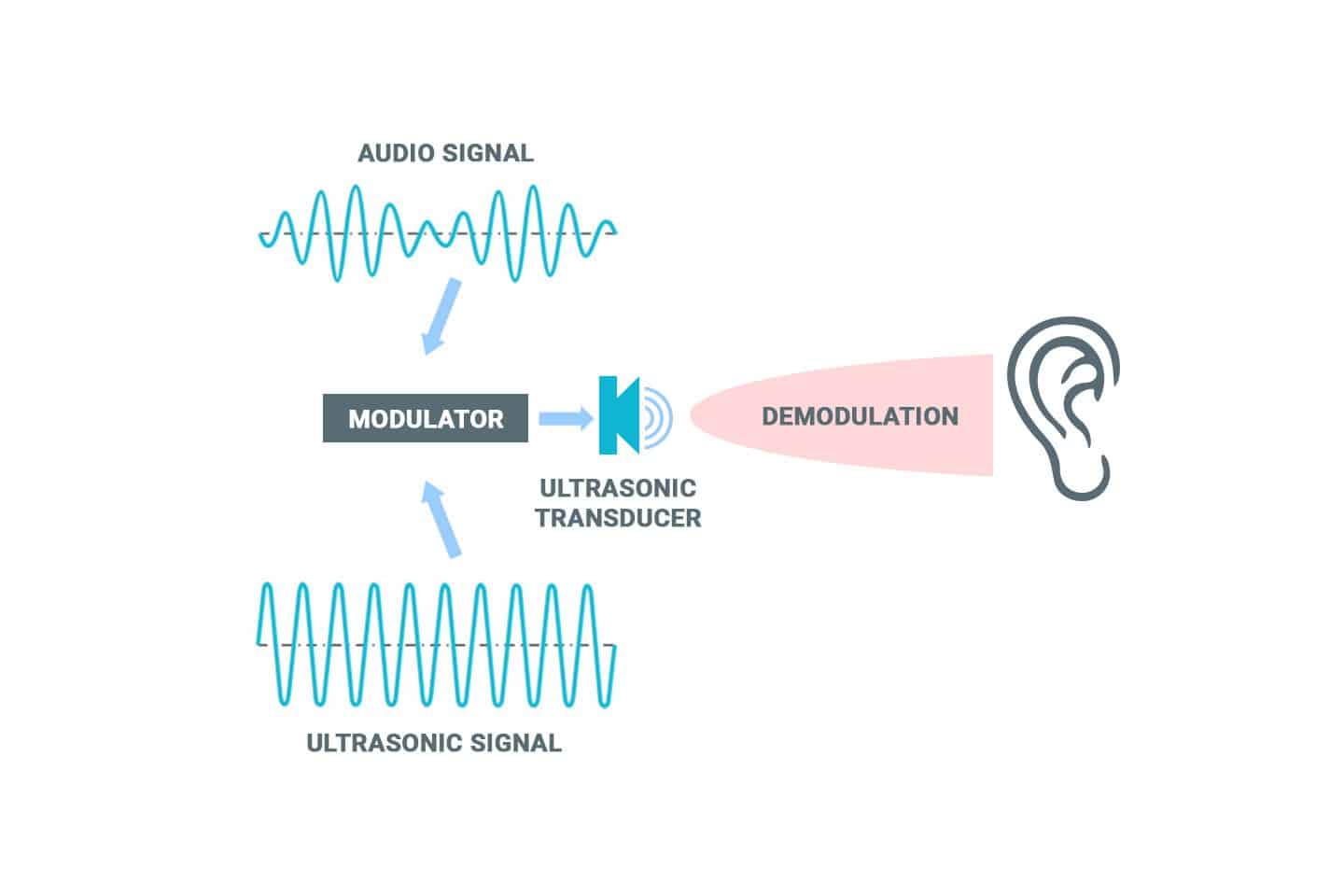
Parametric sound system schematic diagram
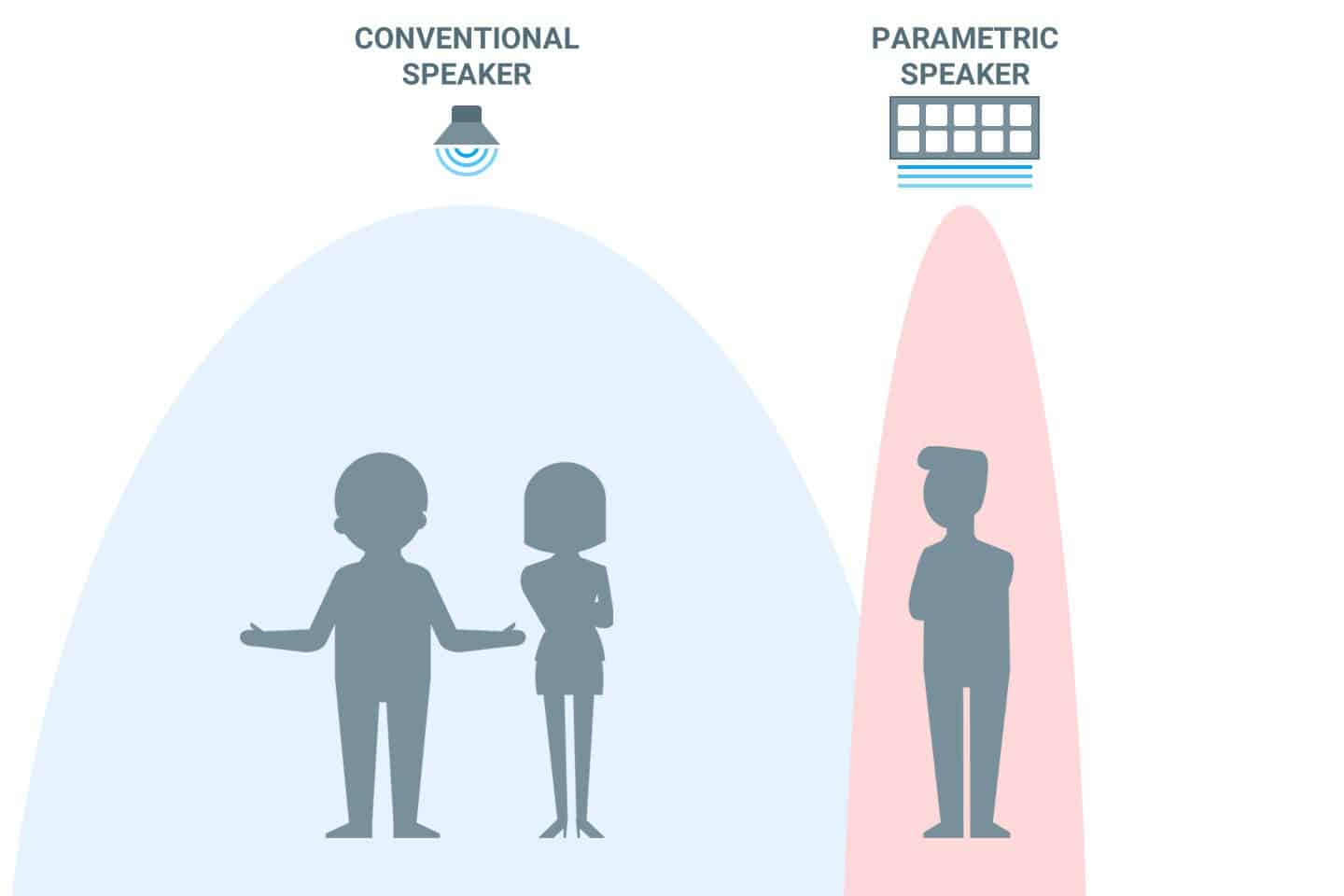
Parametric vs conventional speaker
Early years of the parametric array
The parametric array theory was first proposed by Peter J. Westervelt in June 1960 at the Acoustical Society Meeting at Brown University. The first suggested properties of the parametric array included:
- Narrow low-frequency beam generated with a small source
- Potential broadband operation
- Absence of sidelobes
The array was confirmed experimentally within water at this time and papers by Berktay in the mid-to-late 1960s enlisted multiple, plausible applications. It took till 1973 for the experimental confirmation of the parametric array in air to be reported. Although, practical applications of the airborne array did not arise until years later.
For a greater in-depth view to how sound technologies in general have changed, not just sound control technologies for directional audio purposes in general, take a read of our in depth take on the evolution of audio technology to discover just how quickly things have changed as time progressed.
Focusonics® – innovative sound control technology
Neurotechnology the parent owner of Focusonics®, has implemented innovative hardware solutions that overcome some of the major obstacles that have previously prevented widespread adoption of parametric sound systems. De-modulation is a non-linear process, and complex audio signal pre-processing must be implemented in order to invert this nonlinear process and achieve high-quality and high-volume sound. Researchers at Neurotechnology developed algorithms that address these issues and designed patent pending ultrasonic transducers specifically suited for directional audio systems.
Focusonics® boasts their adoption of state-of-the-art sound control technologies through two of their speakers, namely the Model A and Model B which differ with the following capabilities:
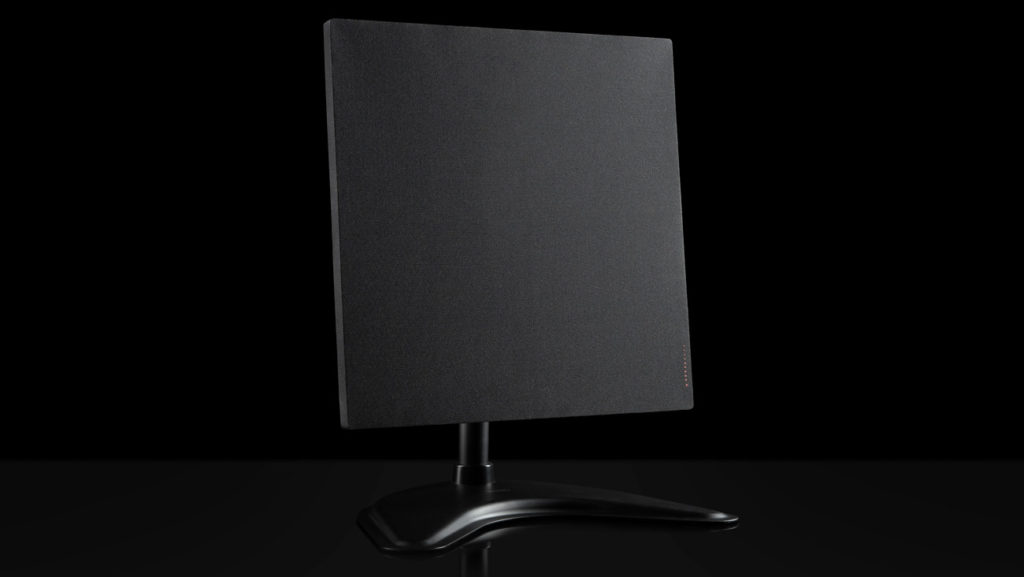
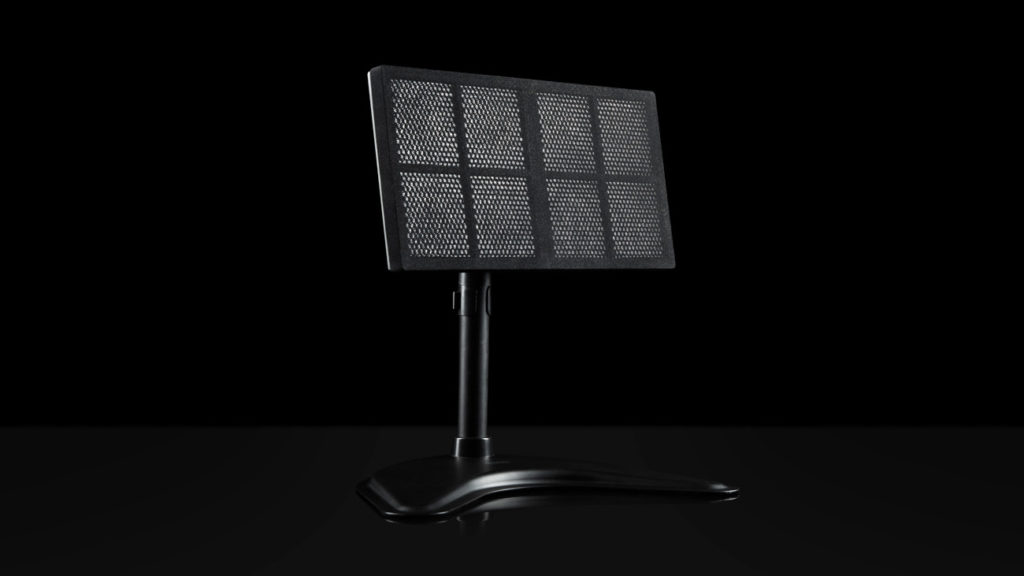
- More powerful version resulting in a larger volume of reproduced sound.
- Best suited to larger distance operations (3-15 metres).
- Ideal for attracting attention of users further away.
- Smaller model that is perfect for conversation-level volume of sound.
- Optimal operating distance ranging from 1-5 metres.
- Ideal for overhead installation.
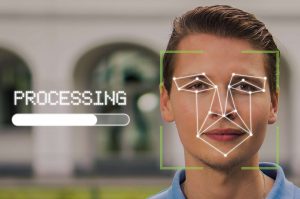
There are many different industries and applications possible for Focusonics® speakers. Implementation commonly occurs to serve the purpose of creating a more immersive experience in museums, galleries or exhibitions and showrooms, but also helping to lure in potential new customers in the retail sector accompanied with digital signage. For more information on the usability of the Model A and Model B speaker check out our applications page.
With Neurotechnology's extensive experience in computer vision, we can also offer custom solutions that use the Focusonics® directional speaker in combination with person detection and recognition for targeted advertising, personalized greeting services or automated warning systems. For example, a camera can be used to detect a person passing by or entering a shop and determine their sex, age or other attributes. The speaker can then be used to transmit a personalized advertising message to this person without disturbing others.

